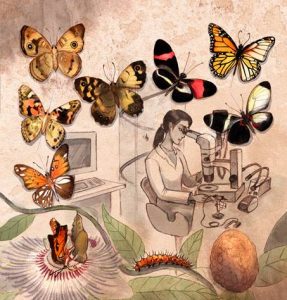‘A baby scientist can do it’ – how to teach a hands-on Genome Editing Laboratory class for undergraduates
Arnaud Martin
The George Washington University, Washington, DC, USA
CRISPR offers new opportunities for biology students to perform inspiring research that explore the gene-to-phenotype relationship in depth. It is also crucial to introduce the future generation of biologists, practitioners and other protagonists to the technical and societal aspects of gene editing. In this talk, I will share my experience leading an undergraduate laboratory class for the past 3 years, where biology senior undergraduates formulated hypotheses regarding the roles of butterfly wing candidate genes, designed guide RNAs targeting them, each injected hundreds of Vanessa butterfly embryos over several weeks, and generated mosaic phenotypes. The class also includes a high-efficiency mosaic Knock-Out experiment in Xenopus, and discussions, readings, student presentations and essays on the Bio-Ethics of Genome Editing.










You must be logged in to post a comment.